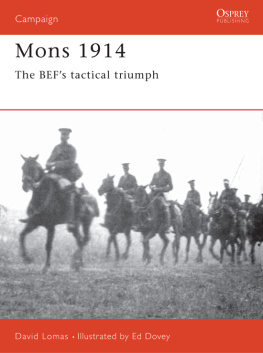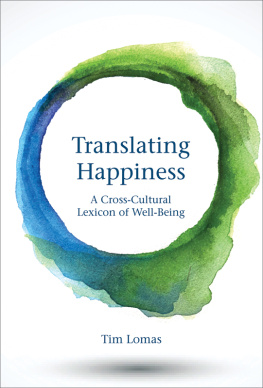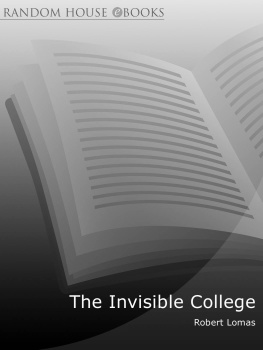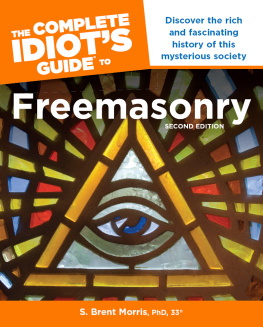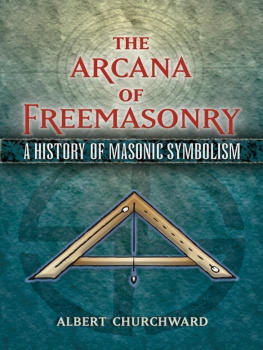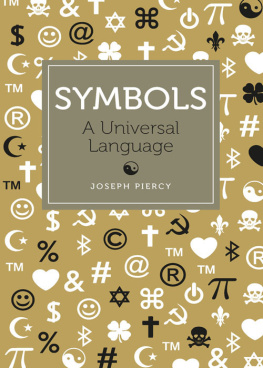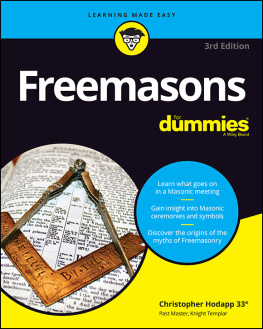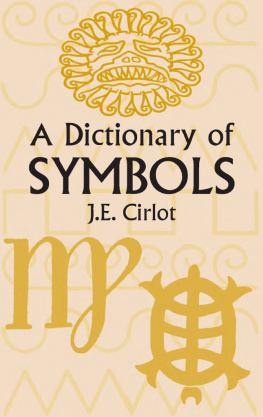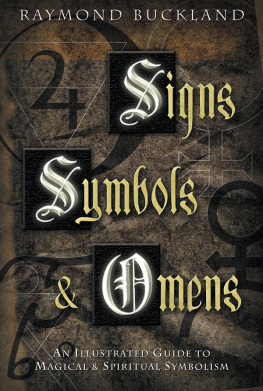THE SECRET POWER OF
MASONIC
SYMBOLS
THE INFLUENCE OF ANCIENT SYMBOLS ON
THE PIVOTAL MOMENTS IN HISTORY AND AN
ENCYCLOPEDIA OF ALL THE KEY MASONIC SYMBOLS
ROBERT LOMAS

2011 Fair Winds Press
Text 2011 Robert Lomas
First published in the USA in 2011 by
Fair Winds Press, a member of
Quayside Publishing Group
100 Cummings Center
Suite 406-L
Beverly, MA 01915-6101
www.fairwindspress.com
All rights reserved. No part of this book may be reproduced or utilized, in any form or by any means, electronic or mechanical, without prior permission in writing from the publisher.
15 14 13 12 11 1 2 3 4 5
ISBN-13: 978-1-59233-450-6
ISBN-10: 1-59233-450-4
Digital edition: 978-1-61058-130-1
Soft cover edition: 978-1-59233-450-6
Library of Congress Cataloging-in-Publication Data available
Cover design by Peter Long
Book design by [Please enter]
Printed and bound in [Please enter]
Black-and-white illustrations by Mike Wanke, except on pages 184, 202, 203, 204,
205, 206, 214, 225, which are courtesy of www.tracingboards.com
Additional photo credits
Istockphotos.com: p. 21, 33, 36, 67, 69, 70, 107, 108, 109, 110, 164, 166, 168
Gettyimages.com: p. 128
Photononstop/Superstock: p. 172, 180, 186,
The Irish Image Collection/Superstock: p. 226
Dedicated to my daughter in a very important year.
CONTENTS
Preface
The Hidden Influence of Ancient symbols
PART ONE
THE SECRET INFLUENCE OF SYMBOLS
Chapter 1
Why Symbols Are More Powerful Than words
Chapter 2
How Symbols Turned Hunters into farmers
Chapter 3
How Symbols Created Kingdoms
Chapter 4
The Power of Symbols on the Human Brain
Chapter 5
How Symbols Created freemasonry
Chapter 6
Symbols Can Penetrate the Mind of God
Chapter 7
The Secret Symbol of Political Stability
Chapter 8
Masonic Symbols that Changed the u.S. Constitution
Chapter 9
How Symbols and Mankind Took a Great Leap Together
PART TWO
A PRACTICAL INTRODUCTION TO MASONIC SYMBOLOGY
Chapter 10
Symbols of the first Degree
Chapter 11
Symbols of the Second Degree
Chapter 12
Symbols of the Third Degree
Chapter 13
General Symbols of the Wider Craft
PART THREE
A PRACTICAL INTRODUCTION TO THE TRACING BOARDS
Chapter 14
The Tracing Boards
PREFACE
THE HIDDEN INFLUENCE
OF ANCIENT SYMBOLS

ANCIENT MASONIC SYMBOLS HAVE SHAPED WHO WE ARE TODAY, and they can still powerfully affect our lives. This book will lead you into that secret symbolic world.
Until recently, only a select group of people were aware of the importance of symbols within the fabric of modern Western society. This group had received extensive training in the use and power of symbols and been taught how to recognize the influence that could flow from the display of certain secret symbols of power in public places. The group knew that the ability to understand symbols is an ancient skill possessed by all humans but that the influence of particular symbols on human actions is universal.
Recent popular literature has latched onto this idea, and it has become a subject for extremely successful fictional thrillers. In particular, Dan Browns The Lost Symbol has taken as its main theme the search for a great symbol of power. But is that symbol real? And do symbols actually have the power that novelists attribute to them?
One group in particular thinks they do, and for them, the study of symbols has become an important part of their lives. It may be coincidental, but many members of this group have been prominent figures in the history of humanity. They have helped formulate modern science and forged the republics that brought freedom to the masses. They have been influential writers, musicians, industrialists, scientists, astronauts, and politicians. But above all, they have belonged to a secret order that has spent the last 600 years studying the way symbols interact with human beings to bring about progress or disaster. These people are the Freemasons.
Beginning in the late fifteenth century, Freemasonry described itself as a peculiar system of morality, veiled in allegory and illustrated by symbols. The purpose of this book is to provide an authoritative guide to the secret symbology of Freemasonry. We will start with a biography of the symbols that have shaped Western civilization and then reveal little-known facts about the influence of these powerful symbols on society.
Symbols speak to us at a far deeper level than writing. The fundamental ideas of Masonic teaching are deeply rooted in the use of symbols. Some of the symbols that Freemasons use date back to humans first attempts to carve symbols into stone. Some 200,000 years ago, humans developed speech, and then about 70,000 years ago, they discovered the visual language of symbols. Some 4,000 years ago, those early symbols were developed into alphabetic writing as a way to encode speech. It is through symbols that humans have expressed their most abstract ideas. As we will see, modern scientific studies reveal that all humans have innate emotional reactions to symbols in general, but it is Masonic symbols in particular that evoke the most positive emotional responses.
Symbolic thinking is deeply rooted. It began over 70,000 years ago with the first known use of symbols by human beings. Those symbols are still in use today and transcend any differences in human language. The archaeological record has huge gaps, but the first ritual use of symbols can be seen in the shamanistic symbols in the cave paintings of northern Europe, which were created about 30,000 years ago.
For well over 2,000 years, since the time of Plato, many people have believed that a realm of perfect symbols exists. With careful training, an individual can be shown how to communicate with this realm and discover the true nature of these symbols. Plato developed this idea into a theory, which is deeply embedded in Masonic symbology. It is this Masonic tradition that has preserved and developed the ancient emotive symbols and led to the discovery of mathematical symbols.
During the seventeenth century, symbolism branched out in two ways. One was the use of loosely defined symbols to create images, emotions, and feelings within a ritual context, and the other was to help the human mind to reason. This later route is mathematics, and it has led to a deep understanding of the world.
There are three main types of symbols:
1. Emotive symbols encode feelings and aspirations. These are the oldest of all symbols. They have been widely used to communicate emotion to illiterate people.
2. Speech symbols encode the sounds of language and enable humans to communicate through time and space. At one time, these symbols were tightly restricted to an elite group and often linked to religion.
3. Mathematical symbols encode a means of understanding and predicting reality. Freemasons helped develop algebra and calculus, which in turn produced these counting symbols.
Using symbology, Freemasonry has been able to communicate its ideas by means of a unique and universal language. Once an idea has been formulated using symbols, it can be transmitted without corruption. This guarantees a continuity of tradition. A modern Mason carries out his symbol work in exactly the same way a Mason did 500 years ago. The Mason of today faces the same fundamental problems in his quest for Truth that a Mason living in the fifteenth century had to face, and the symbols provide the same answers.
Next page

